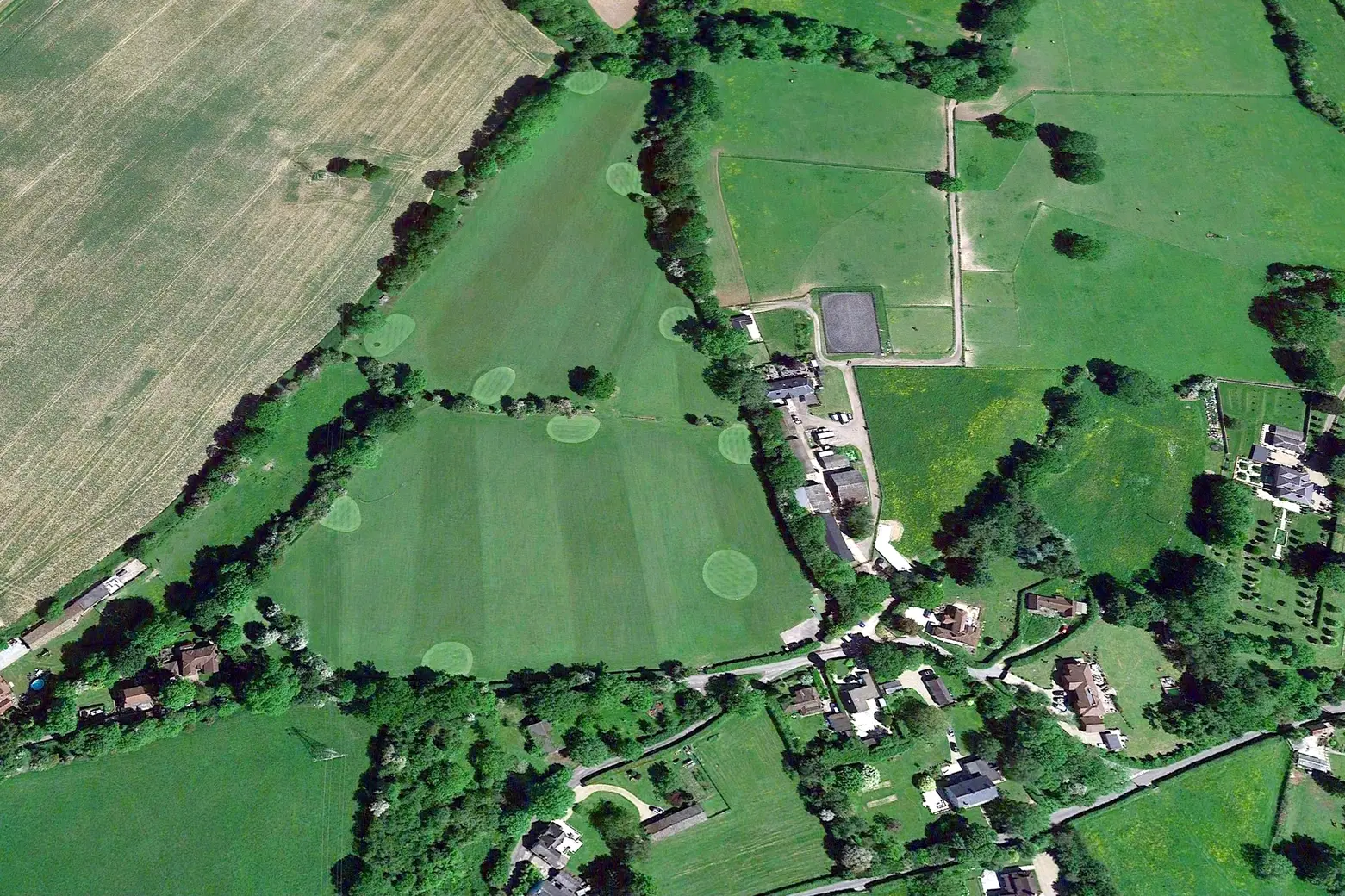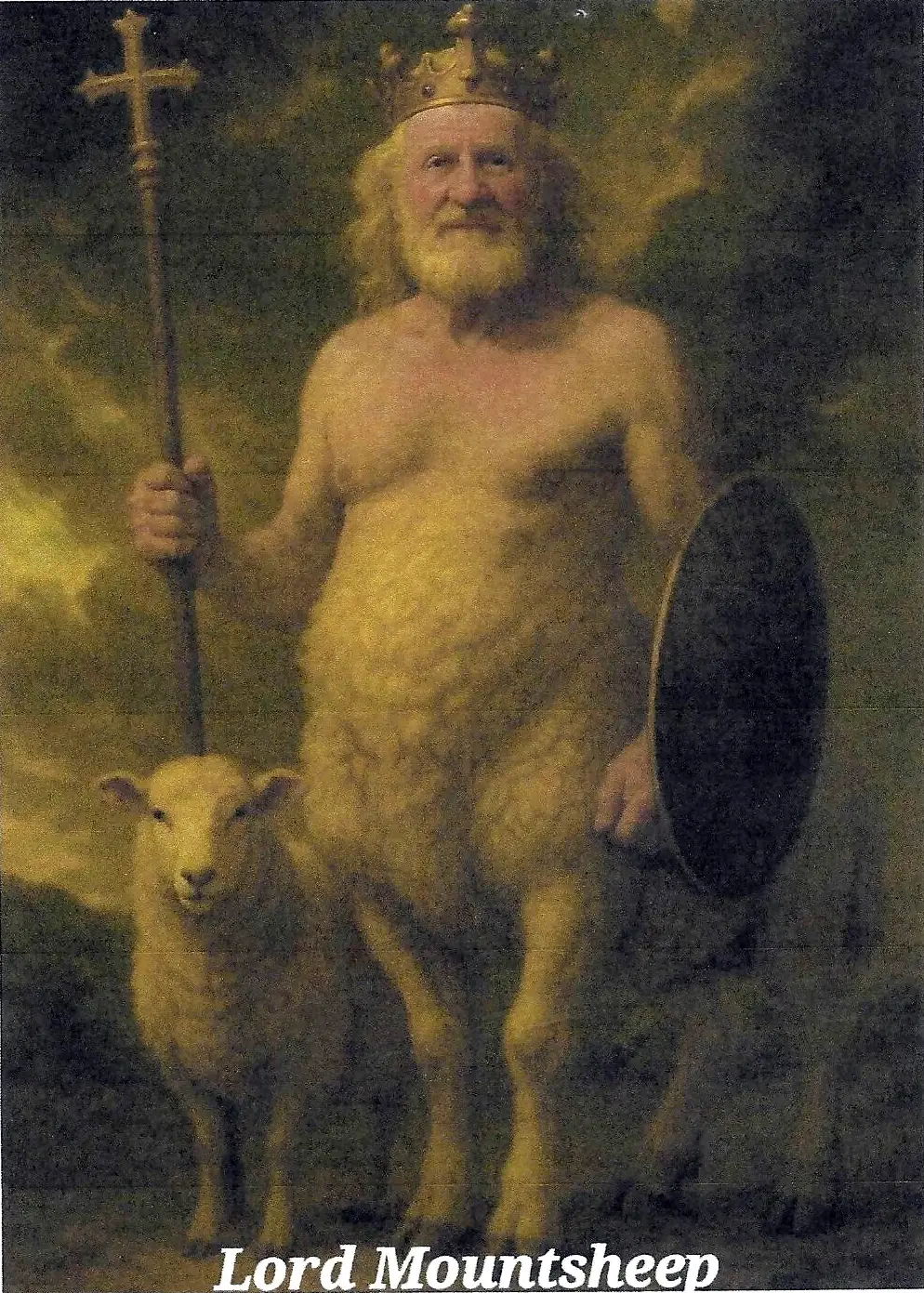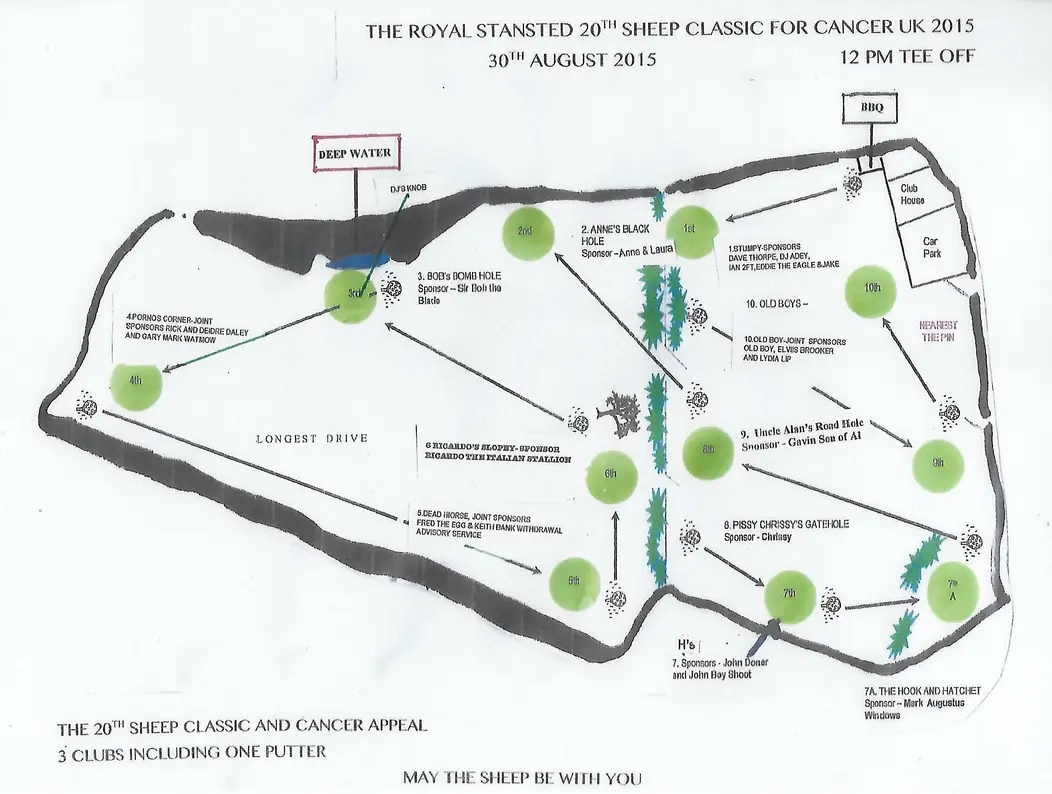Stansted Golf Course

Anyone considering membership of the nearby prestigious London Golf Club might be surprised to learn there is an arguably even more prestigious and cheaper alternative within the village itself, known locally as the Royal Stansted!

Membership, however, may take a while, as opportunities are limited (usually upon death) and are strictly by invitation from its Chairman, the outspoken and fervent defender of the countryside, the self-appointed Lord Mountsheep (also known as “The Old Boy,” Phil Clarke of Trochee, Hatham Green Lane). Potential candidates may also be put off by the initiation rites, which can be intimidating and usually include adopting a less-than-flattering soubriquet that one might hesitate to repeat in polite company.
So how did this 14.5-acre privately-owned course, with its 10 ribaldly named holes, come about?
The answer is testament to what can be achieved when the whole village pulls together in the face of adversity and succeeds in preventing an environmental catastrophe, and how two stalwarts of the village largely eliminated the possibility of it happening again in their lifetime.
Warning bells rang one weekend in April 1990 when the spring solitude was rudely interrupted at 05:00 hours by the sound of heavy plant bulldozing a track between South Ash Road and Wises (then Wyse’s) Lane. Shortly thereafter, a portacabin was erected, more industrial machinery brought on site, and a planning application made to create an access road and new farmyard on 200 acres of land formerly farmed by Mr Kingston of South Ash Farm.
This prompted ripples of concern throughout the village and an emergency public meeting of the History Society’s predecessor, The Stansted and Fairseat Society. Chaired by the indomitable Peter Draper and formed to help protect the area from the planned incursion of the M20, the Society put out feelers and discovered that the applicant operated a waste management business. Suspicions of an alternative agenda were confirmed when a planning application was eventually filed to use the road to fill the valley between South Ash Road and Wises Lane with 400,000 cubic metres of soil, clay, chalk and gravel, (possibly from the construction of the high speed rail link), a process that would have involved a huge number of heavy goods vehicle movements over many years, and subjected local residents to unprecedented levels of noise, smells and dust, and which would have been a blight on the landscape.

Together, Peter Draper, and Kent County Councillor and local resident Sarah Hohler, spearheaded a campaign to halt the development, with staunch support from Bill Charnley, Clerk to the Parish Council, and local MP Sir John Stanley. Residents vehemently opposed the planning application. Their action was endorsed by statutory consultee Tonbridge and Malling Borough Council, who placed enforcement notices on the applicant to remove the roadway and associated equipment. With such a powerful groundswell of opinion, which also included representation from the National Rivers Authority and Mid Kent Water, the applicant sought to defer the scheme. However, Kent County Council went ahead and refused the application in December 1990, when the village breathed a huge sigh of relief.
However, with the land unused, uncertainty prevailed, so Phil Clarke and Court Lodge farmer Fred Hohler decided to purchase it to prevent a recurrence. After a period of being used for grazing, Phil, who had a very successful business creating and maintaining sports pitches and bowling greens decided he might better use those skills to raise money for charity by holding an annual golf tournament for friends and so, whilst continuing to work full time, he diligently started the process of gradually improving the two fields in front of his bungalow and in 1995 held the first charity “Sheep Classic”. The rest, as they say, is history. Arable farming continues on the side of the valley still owned by Court Lodge Farm, and following the 25th annual “Sheep Classic” in 2020, “Lord and Lady (Karen) Mountsheep” had raised over £125,000 for Cancer Research UK.
Author: Mike Goddings
Editor: Tony Piper
Contributors: Phil Clarke
Acknowledgements: N/A
Last Updated: 02 September 2025
